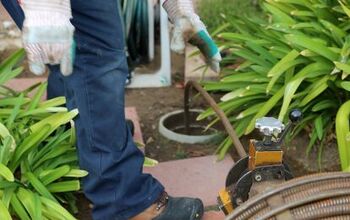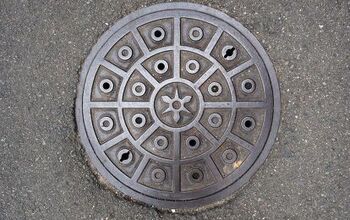What Is A Sewer Scope Inspection? (Find Out Now!)

When you are buying a home, the house usually undergoes several inspections before you sign the final papers. While everything may look fine on the inside, it is wise to also look into what may be hidden underground. No one wants to enter a new abode and be surprised with sewer line troubles! A sewer scope inspection is a way to check what’s going on in the sewer line without digging up the front lawn.
A sewer scope inspection checks the private sewer line of a home. A small video camera is run through the lateral sewer line until it meets the public pipe. If the home you are planning to buy is over 20 years old, a sewer inspection will let you know if the line is clogged with tree roots or shows signs of cracks or damage.
Here are some tips on what a sewer scope inspection is and how it can help you when buying a home or maintaining one.
Do You Need Sewer and Plumbing Inspection Services?
Get free, zero-commitment quotes from pro contractors near you.

Why You May Need a Sewer Scope Inspection
A sewer line may be the last thing on your mind when you are looking at a new home. First to catch your eye may be the floorplan, the kitchen, or the hardwood floors. While a sewer line may not be the first concern, it is important for you to know about any problems with your pipes.
According to homeadvisor.com, the costs to replace a sewer line can range from $50 to $25 per foot. You could also end up with water damage and bacteria growth if the problems are severe. So, if problems with a sewer line show up on a report, some serious negotiations may need to happen before you sign on the dotted line.
Though it may mean you are spending a few extra $100 dollars upfront, a sewer line scope inspection can save you money in the long run. You may even find a home inspector who will bundle this service with other home inspections to get a reduced rate.
If you are already a homeowner, a regular sewer line check can be a good preventative measure to keep your system in working order.
How a Sewer Scope Inspection Works
A certified and insured sewer line scope inspector can let you know the damage done or maintenance needed for your lateral sewer line. You will get a report with the condition of your pipe and a recommendation on what steps you need to take to keep your pipes in working order. Here is a play-by-play of how a sewer scope inspection works:
Step 1: Flood the line
A sewer scope inspector will first flood your line with extra water to allow the camera easy access.
Step 2: Insert the camera
The waterproof, borescope camera is attached to a cable and it will be inserted into your pipe at an access point.
Step 3: Create the video
The camera is pushed through your sewer line creating a video report of what is going on under the ground.
Step 4: Receive the sewer line report
If the sewer line shows damage, the inspector will give you advice on how to proceed with reparations or replacement of the line.
Problems you may experience with an old or damaged sewer line
If a sewer line is not repaired in time, it could affect your home in the following ways:
Flooding
If your pipes are severely blocked by tree roots or other waste, the water may eventually back up into your home. This can affect the stability of your foundation and could even destroy your subflooring and flooring.
Sinkholes
If the pipes are cracked or broken, you may notice sinkholes, marshy areas, or green patches in your yard. Also, a high water bill could be indicative of leaks in your sewer line.
Mold
A slow septic tank leak can cause moisture to build up in your walls and create a hazardous health risk. Once mold starts to take over, it can be difficult to remove.
Signs That Your Sewer Line May Have Issues
As a homeowner, it is a good idea to check the condition of your sewer system to catch problems before they start. Most experts in the field recommend a sewer line scope inspection on a yearly basis. When issues with your sewer line are caught early on, it is much easier to remedy them.
Here are some tell-tale signs that your sewer line may need attention:
- Toilets frequently back up or won’t flush
- Water bubbles up out of drains
- Multiple clogged drains
- Foul odors rising from the drain
These signs can point to blockage or damage to your sewer line. If you notice these signs in your home, you will want to call a sewer line inspector for professional advice. By acting quickly, you can minimize the cost of repairs.
Do You Need Sewer and Plumbing Inspection Services?
Get free, zero-commitment quotes from pro contractors near you.

Related Questions
Is sewer line damage covered in home insurance policies?
Each insurance plan will depend largely upon your provider. That being said, coverage for sewer line damage is often limited. If you have experienced a sudden pipe burst or accident, this will usually be covered by your provider. However, if the damage is due to a lack of maintenance, you may have to foot the bill for repairs. When in doubt, it is best to speak with your insurance provider for specific details.
When should I replace my sewer line?
How long your sewer pipes will last can vary depending on the material that was used to make them. For example, Orangeburg and clay pipes usually will have a much shorter lifespan than cast iron or PVC. Also, how well your pipes were installed and even your soil type can be factors that can affect the lifespan of your sewer line.
How much does a sewer line repair cost on average?
The total cost for sewer line repairs can cost anywhere from $1,000 to $4,000. Most homeowners on average will spend in the neighborhood of $2,500 on repairs. However, for a full sewer line replacement, homeowners can spend up to $25,000. This cost will vary based on how much line needs to be replaced as well as your specific geographical location.

Alex Praytor is a native Texan who got her degree in English Literature and decided to travel the globe. She finds the architecture and design of homes across cultures fascinating. In her spare time, she visits coffee shops with her family and creates projects for their own home. Alex enjoys sharing tips on how to keep repairs up to date while turning a house into a home.
More by Alex Praytor



























